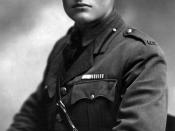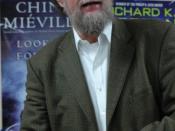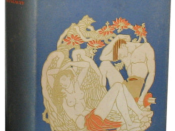Hemingway and the Struggle of Masculinity in WarMen in A Farewell to Arms and For Whom The Bell TollsThe name of Ernest Hemingway has long been associated with the idea of a strong, stubborn man who is very socially inept. In both A Farewell to Arms and For Whom the Bell Tolls, we are introduced to an extremely cold, unfeeling character and we see how they evolve from one type of man into another. Frederic Henry and Robert Jordan are both Americans serving overseas in some conflict, Henry being in World War I and Jordan in the Spanish Civil War between the fascists and communists, and they originally see these conflicts as a way for them to prove their manhood. They soon realize that war is not meant for all people and that it should not be glorified. They either die for their new ideas or simply vanish from our world into a realm of nothingness.
This transition needs to be analysed more closely in order for us to understand it better.
In A Farewell to Arms and For Whom the Bell Tolls, we see how the main character is, in the beginning, a cold and sometimes insensitive person who loves the idea of war. In Arms, we see how Henry is a calm, calculating man who tries to live up to the Western impression of how a man should act. In American history, men have tried to reassociate themselves with a deeper meaning of manhood as a way to prove to themselves that they are acting like a man should: "A broad spectrum of American men soon came to view war as the only way to cure a hopelessly flagging national masculinity"(Donnell para 35). In the beginning, Henry the confidence of a man who is able to survive anything...


